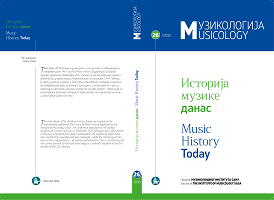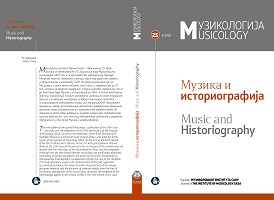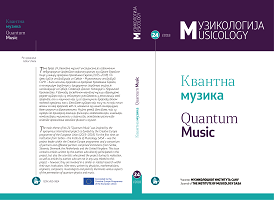Author(s): Monika Novaković / Language(s): Serbian
Issue: 26/2019
Silence in film and understanding of silence in the seventh art poses many questions. The results of the analysis of these four films gave their unique answers to the said questions. The unique relationship of silence and sound was considered, and the reason for dedicating equal attention to both ends of this important spectre was to reach better understanding of the films that served as case studies, as well as to understand message or messages that were given to the viewers in conjuction with the action on screen (or lack thereof). Special attention was also given to several elements that, I believe, play vital part in understanding the usage of silence in film, such as: character’s behaviour and body language as well as his appearance, his relationship with other characters, and, maybe most important, the reason why director chose to build specific sound world around the particular character. Jef Costello (Le Samouraï), as a character, is defined by his cold exterior, few words and little to no dialogue he exchanges with other characters – silence is inherent to him as a person. Goya’s Ghosts is the perfect example of the biopic that can be built around one specific information from a person’s biography. Of course, I’m speaking of Goya’s loss of hearing which was illustrated in the film via his relationship with other characters and also via the fact that, like Costello, he expresses himself using body language, except it is for entirely different reasons. In the third case study, George Valentin is a character whose profession is silence and who refuses to give it up for the sake of new technological advancement in films – sound, the sole enemy to his professional survival (the very film The Artist is a silent movie depicting this golden era of film history). Last case study provides an insight into the nature of vow of silence, especially in stoic sense of the word. Namely, character Frank Valera takes a vow of silence until he avenges his family and the basis for his vow is the book Meditations which Marcus Aurelius wrote. Equipped with the appropriate theoretical apparatus, these four “views” on silence show how silence can be understood and presented in diverse ways. Directors may use it to reach better effectiveness of the film they direct and that fact has been, ultimately, manifested through four unique types of silence: 1) silence as the absence of dialogue and as dominant “sound landscape” of the film, filled with ambient sounds and, therefore, realistic (Le Samouraï), 2) loss of auditory world and entrance into the embrace of silence (Goya’s Ghosts), 3) genre-specific silence (The Artist) and 4) stoic silence (Acts of Vengeance).
More...



